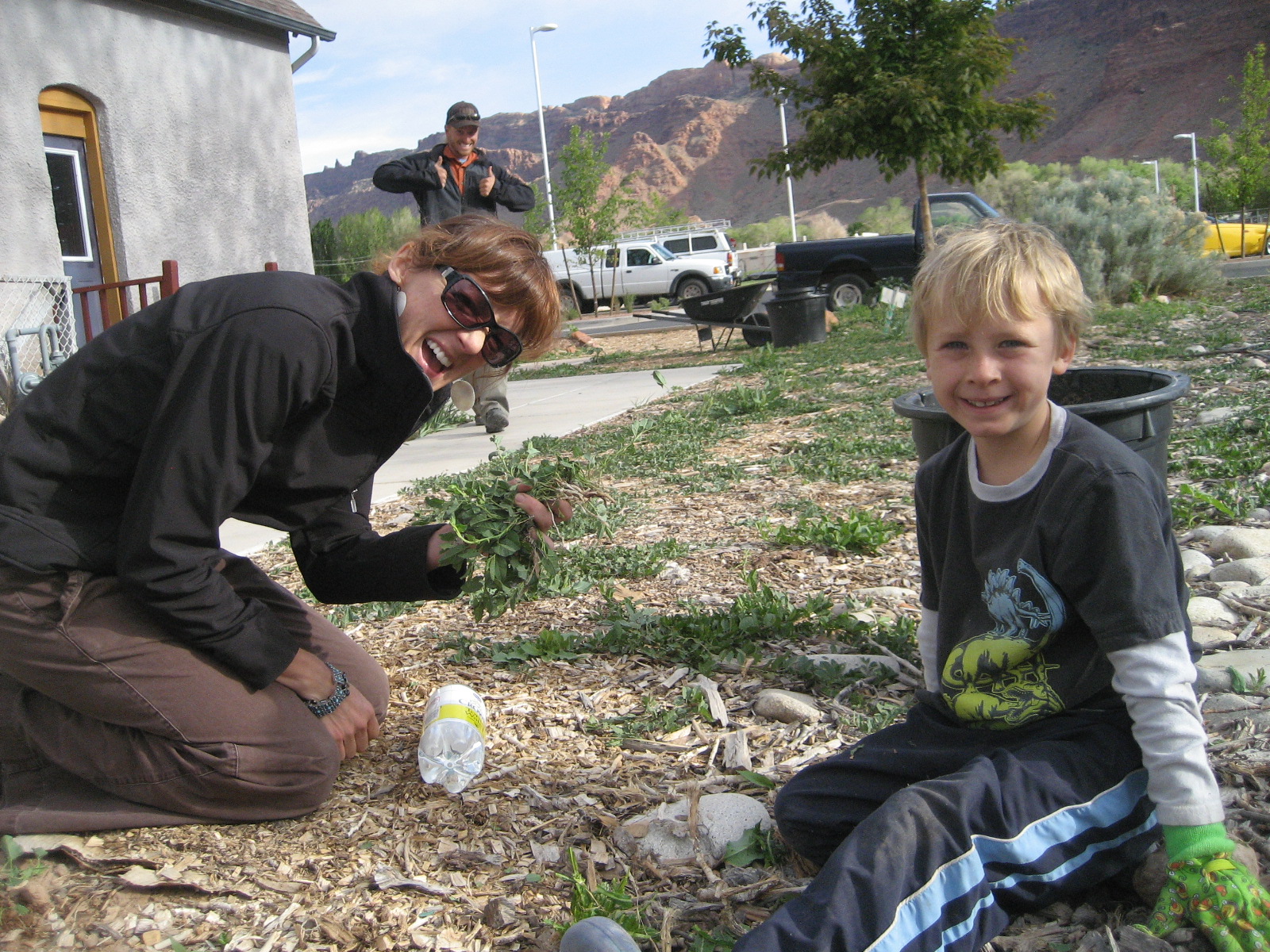Some information may be outdated.
Kelly and Thatcher Vagts have been going to the Youth Garden Project’s Weed ‘n’ Feed dinners for longer than they’ve been parents.
And when they became parents? They brought their son along.
Now 4, Pierson Vagts has grown up at the garden.
“The Youth Garden Project is very much a part of his life,” Kelly Vagts said. “He loves it. He’s not too into weeding, but he loves going and playing with other children and feeding the rabbits and chickens.”
Weed ‘n’ Feed brings community members together at the garden, 530 S. 400 East, every other Wednesday evening during the growing season – March through September.
Anyone is welcome to show up at 6 p.m. to weed or do other light gardening work for about 90 minutes before enjoying a dinner provided by the Youth Garden Project. It’s always made with as much garden produce as possible.
The Vagts come as often as they can, at least once a month.
“We just really believe in the mission of the Youth Garden Project and support the education of community members, especially children, in growing your own food and supporting local growers,” Kelly Vagts said. “We love it. It’s really important for us to continue to support that organization. It’s an incredible model.”
A nonprofit, the Youth Garden Project began in 1996 as a place for youth with court-ordered community service to fulfill their hours. Now located on one and a half acres next to – and leased from – Grand County High School, the Youth Garden Project offers after-school programs, field trips, summer camp and volunteer and internship programs, among other activities.
Weed ‘n’ Feed is one of them.
It’s a long-standing tradition at the garden, said Delite Primus, the Youth Garden Project’s executive director.
Volunteers of all ages come to help and enjoy the sense of community that is created. Participants range from long-time community members to tourists in town for a night. Youth Garden Project board members come, as do Moab City Council members.
“It’s really open to families with young kids, families with older kids, individuals of any age to come and get to know other community members while they’re weeding and help the Youth Garden Project with our garden,” Primus said.
Usually, around 25 volunteers show up. And the Youth Garden Project is thankful for their help.
“It’s a time when we can get a lot of work done,” Primus said. “The signs of the before and after are pretty remarkable. They get huge sections of the garden weeded in an hour’s time. It would take our staff all day to do what happens at the Weed ‘n’ Feed.”
The work isn’t always weeding. Sometimes, it’s mulching. In the spring, sometimes, it’s planting. Either way, it’s work that a large number of people can help get done.
Of course, the benefits stretch beyond the garden.
“One of the things we are really proud of that happens at the Weed ‘n’ Feed is that it connects people with other community members,” Primus said. “You weed next to each other for an hour and you feel like you know somebody new in the community.
“It definitely has the community-building aspect to it. That’s one of the reasons we keep doing them and we feel like it’s an important program.”
Kelly Vagts agrees.
In an age defined by cell phones and the Internet, getting to know someone in a work environment like the Youth Garden Project is amazing, she said.
“Eating with community members creates a bond and a really important relationship that is lacking in a lot of American society,” Kelly Vagts said. “We’re very busy, and so sitting down with even our family to break bread and have conversation not distracted by social media is really important and lacking. To be able to go to a community event where you’re weeding, where you’re doing something physical with your body and you’re having a conversation with somebody you don’t know and then sitting down and sharing a meal, you’re forced to make conversation and ask questions and be open to answering questions. And it just intensifies that relationship. You run into this person around town and you have this bond.”
Appreciate the coverage? Help keep local news alive.
Chip in to support the Moab Sun News.





